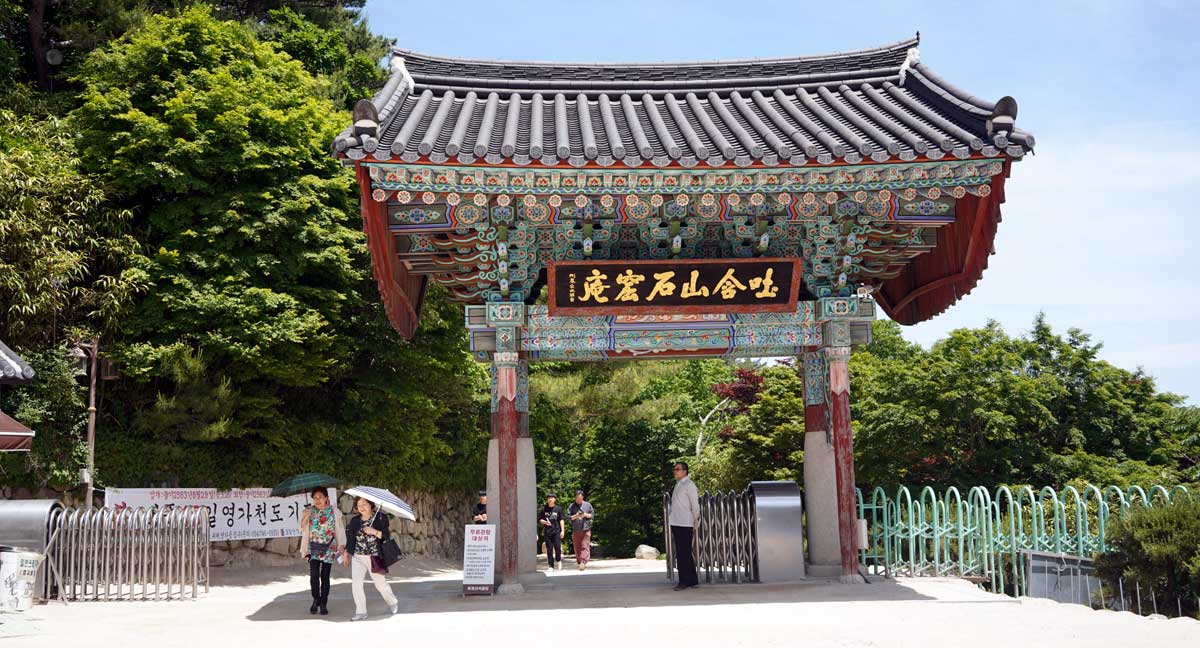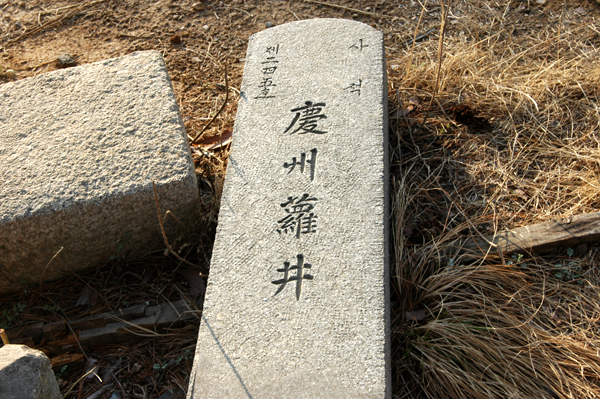Three-story Stone Pagoda at Yongjangsa Temple Site (Treasure No. 186)
Namsan Mountain in Gyeongju is a mountain that has been sacred to the Silla people for a long time of 1,000 years and has been regarded as Bulgukto.
About an hour away by car from Busan, there is a city with a long history of a thousand years and the breath of old ancestors. Entering the Gyeongju Tollgate, which symbolizes the traditional Korean tile roof made with the most beautiful curved beauty, the world quickly changes and the city with its old appearance unfolds in front of you. The traveler meets the capital city with a thousand years of history and talks with Silla.
The place I visited before the Buddha’s birthday in 2546 was Namsan Mountain in Gyeongju. Namsan Mountain is a mountain that has been sacred to the Silla people for a long time of 1,000 years and has been regarded as Bulgukto.
Namsan Mountain, which has been a sacred place for young people, is dotted with over 100 temples and Buddhist statues and 80 stone pagodas, making it difficult to visit the remains of Namsan Mountain in Gyeongju for a day or two.

At the entrance of Yongjanggol in Gyeongju, Gyeongsangbuk-do (Yongjanggok-ri, Naenam-myeon), the acacia in May gives off a fragrant flower scent. Yongjangsa Temple, located 350m above sea level, is located between Geumobong Peak (468m) and Gojibong Peak (494m), the representative peaks of Namsan Mountain in Gyeongju. If you follow the narrow road about 400m from the Yongjang-ri No. 500 seat bus stop on the side of National Road 35, you will find a wide open space and start hiking. To get to the site of Yongjangsa Temple, you have to step on the stepping stones here and cross the stream.
Around Yongjanggol Valley, a sign saying, “The valley water is used by residents as drinking water, so don’t get dirty” stands out. Nowadays, when most valleys in Korea are suffering from pollution, it is rare to drink valley water as it is.
If you cross the stream at the end of the mountain path and cross the stream again, the mountain path is divided into two. If you walk about 400m between the bushes full of Shinwoodae (bamboo grown naturally in the mountain) along the road on the left, you will see the site of Yongjangsa Temple.
Only a few tiles and foundations remain between the lush bushes. If you look at the high stone wall remaining behind the temple, you can see that it used to be a fairly large temple. Yongjangsa Temple, which was known as the extension of Beopsangjong by Daehyeon Monk during the Unified Silla Period, disappeared during the Joseon Dynasty.
On the information board at the temple site, it is introduced that Maewoldang Kim Si-seup (1435-93) stayed here during the Joseon Dynasty and wrote Geumoh Shinhwa, Korea’s first Chinese novel.
Geumoh Shinhwa Geumoh is said to have been derived from Geumobong Peak, where Yongjangsa Temple is located.
 Looking northeast from the temple site of Yongjangsa Temple, a three-story stone pagoda stands tall toward the sky on a high rock.The Buddha looks down at me and beckons for me to come up quickly. It is a three-story stone pagoda (Treasure No. 186) at Yongjangsa Temple Site.
Looking northeast from the temple site of Yongjangsa Temple, a three-story stone pagoda stands tall toward the sky on a high rock.The Buddha looks down at me and beckons for me to come up quickly. It is a three-story stone pagoda (Treasure No. 186) at Yongjangsa Temple Site.
To climb the Yongjangsa Temple Site stone pagoda, you can follow the hiking guide ribbon tied to the branches. When I finally reach the peak, the Seated Stone Buddha (Treasure No. 187) and the Seated Rock-carved Buddha (Treasure No. 913) welcome me.

Passing in front of the Rock-carved Seated Buddha and turning to the right of the peak, you will finally meet the three-story stone pagoda. Standing in front of the stone pagoda, you can see Gojibong Peak standing tall to the south and Barry Plain embracing the Hyeongsangang River to the west.


Most of the stone pagodas built during the Unified Silla Period consist of upper and lower stylobates, but this stone pagoda has only one upper stylobate. This is why the three-story stone pagoda is said to be the world’s tallest stone pagoda, even though the height of the three-story stone pagoda is only 4.5m, as the entire 400m-high peak where the pagoda stands is located. The consideration of this stone pagoda, which is only 4.5m long, as if it gently wraps around the mountains and the round sky in its large arms, touches me.
Isn’t it the Buddha’s heart that he wants to be the only one among the three images at the same time? They put their hands together in front of the tower. Rest in peace, all of you who live in peace.
It suddenly occurred to me that the deer that Kim Si-seup saw might be asleep somewhere in the mountain. The sun, which was hidden by clouds, was spraying faint sunlight on the three-story stone pagoda.
How to get there: Take the city seat bus number 500 from Gyeongju Intercity Bus Terminal (it takes 20 minutes to Yongjanggol)














Add comment